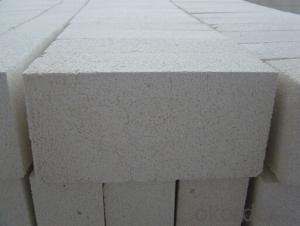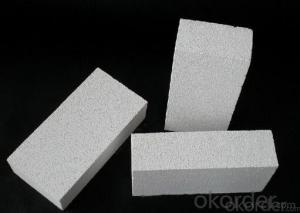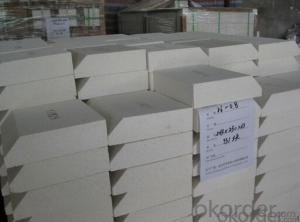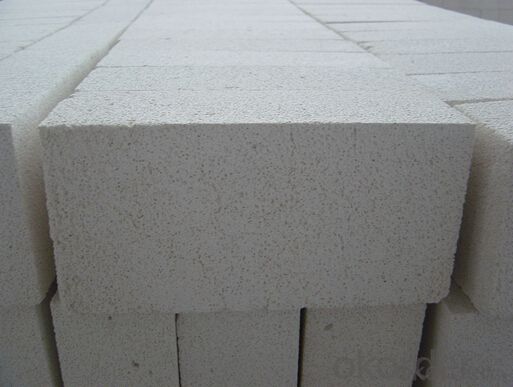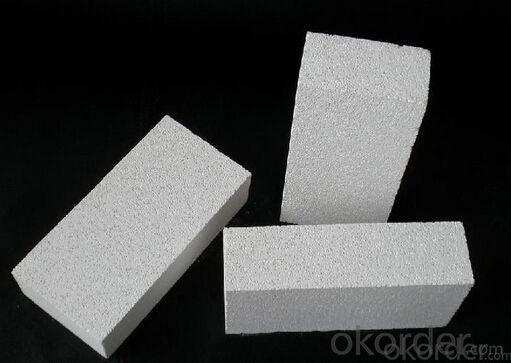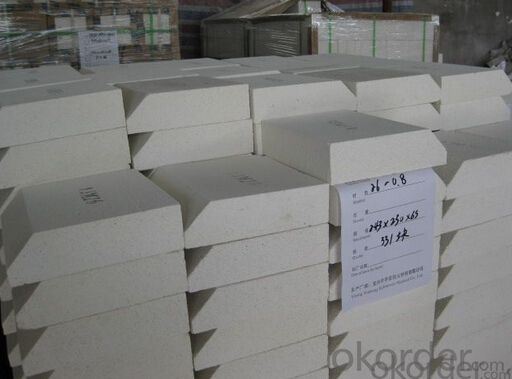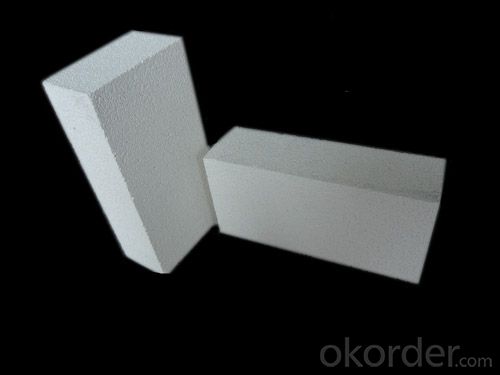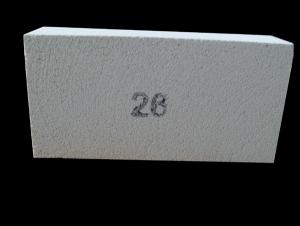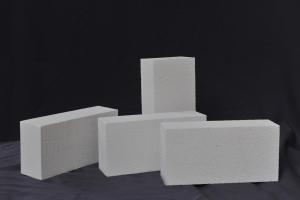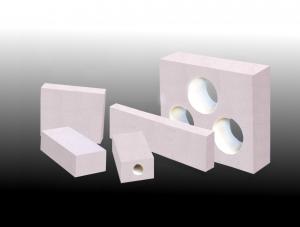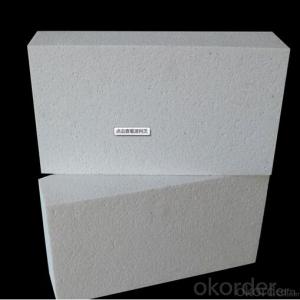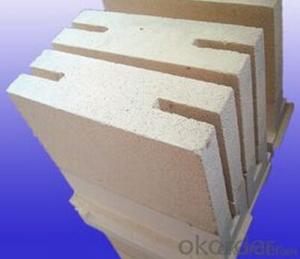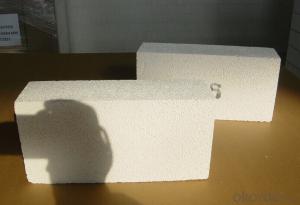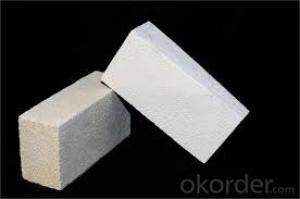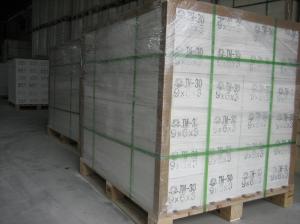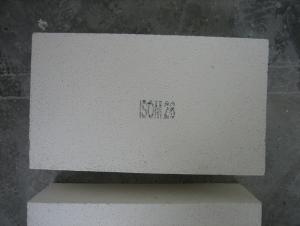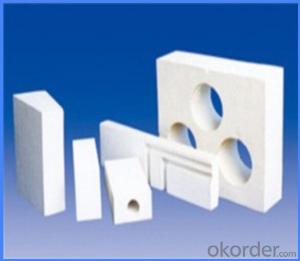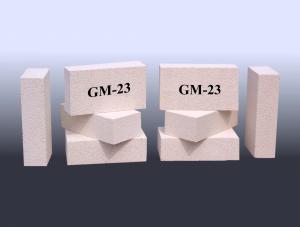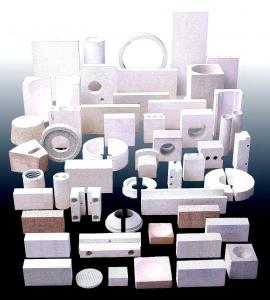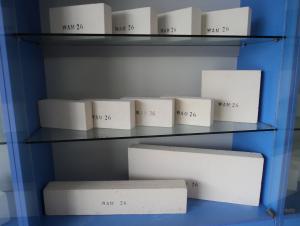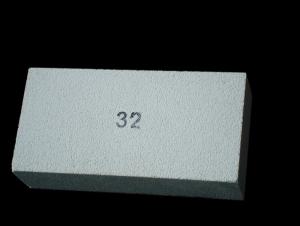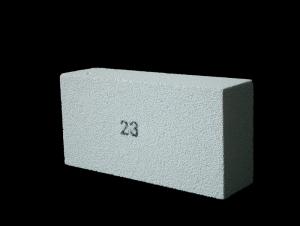Insulating Fire Brick - Refractory Mullite Jm 26
- Loading Port:
- Shanghai
- Payment Terms:
- TT OR LC
- Min Order Qty:
- 5000 kg
- Supply Capability:
- 100000 kg/month
OKorder Service Pledge
OKorder Financial Service
You Might Also Like
Top insulation ceramic fiber blanket
General information of ceramic fiber blanket
Cmax ceramic fiber blanket is made of high quality kaolin clay, centrifugal high purity alumina and silica or blowing process. It's no asbestos. Double side acupuncture for easy installation provides a lot of tension or strength of the blanket.
Products are divided into standard, high pressure, HA and Hz, respectively, corresponding to the highest service temperature of 1000, 1100, 1200, and 1350
Characteristics of ceramic fiber blanket
Heat resistance
Light weight
Low thermal conductivity
Low heat storage
Thermal shock toughness
High tensile strength
Application of ceramic fiber blanket
Refractory fiber lining for petrochemical process heating furnace
Heat treatment furnace or intermittent (shuttle) kiln heat surface lining
General oven standby insulation
Heat sealing or kiln kiln car door
Electrical insulation
Ceramic fiber blanket
Common problem solutions
1. What products do you have?
We have all kinds of refractory bricks, refractory casting materials, mortar, cement, ceramic fiber products, etc..
Or you can browse our products to choose what you need.
2. How to control product quality?
With strict quality control system throughout the material selection and production process, we have the quality of refractory materials and ceramic fiber products to meet customer requirements.
From the selection of raw materials, the quality of our control to start. The quality certificate of the raw material is required, each batch of the products are to be tested in the use of the forward line. In the production process, the quality control by the workers, and then each piece of classification, and through the quality supervision and inspection.
3. Can you give me a brief introduction to the application of your product?
My company is mainly engaged in refractories in the steel, cement, glass, ceramics, petrochemical, electric power and other industries.
4. What information do you need if I need you?
In order to select the right products, we will provide us with information, such as the United States, technical data, order quantity, product application, etc..
If you have any questions, please contact us.
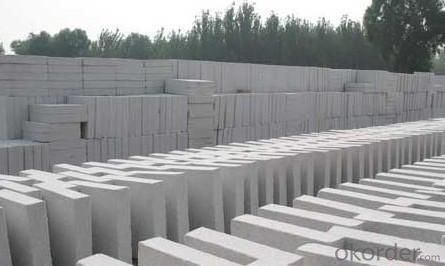
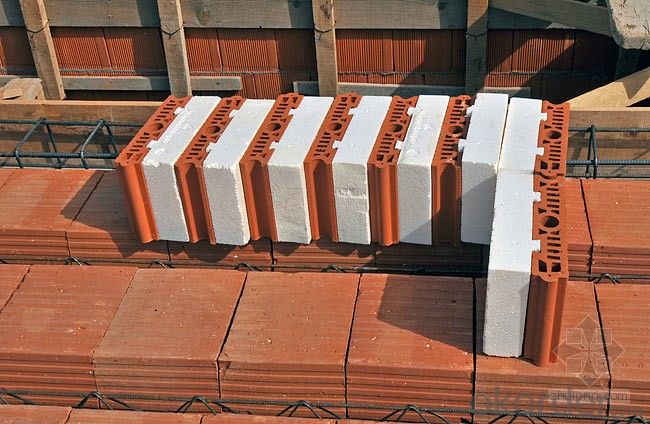
FAQ
1. Which products do you have?
We have all kinds of refractory brick, castable, mortar, cement, ceramic fiber products, etc.
Or you could browse our products to choose what you need.
2. How do you control the products quality?
With strict quality control system throughout the materials selection and production process, our refractory and ceramic fiber products quality is effectively controlled to meet customer requirements.
From the raw materials selecting, our quality control begin. The quality certificates of raw materials are required and each batch will be tested before using. During production, the quality control are conducted by workers and then each piece will be sorted and examined by quality supervise.
3. Can you give me a brief introduction of the application of your products?
We are mainly specializing in the refractory materials in iron and steel, cement, glass, ceramics, petrochemical, electric power Industry, etc.
4. If I need your offer, what information do you need?
In order to choose suitable products, it will be appreciated to provide us the information, such us specification, technical data, order quantity, products application etc.
If any question, please contact us freely.
- Q: Can insulating fire bricks be used in tundish linings?
- Yes, insulating fire bricks can be used in tundish linings. Insulating fire bricks are designed to resist high temperatures and provide excellent insulation, making them suitable for use in tundish linings where heat containment is crucial.
- Q: What are the main components of insulating fire bricks?
- The main components of insulating fire bricks are typically a combination of alumina, silica, and various lightweight additives. Alumina (Al2O3) provides high temperature stability and resistance to thermal shock, making it a key component in insulating fire bricks. Silica (SiO2) helps to improve the refractory properties and insulation capabilities of the bricks. Additionally, lightweight additives such as vermiculite or perlite are often included to increase the insulating properties of the bricks. These components work together to create a material with excellent thermal insulation, low thermal conductivity, and high resistance to heat.
- Q: How do insulating fire bricks affect the overall weight capacity of a structure?
- Insulating fire bricks can have a significant impact on the overall weight capacity of a structure. These bricks are specifically designed to have low density and high thermal insulation properties, which means they are lightweight compared to traditional dense firebricks. By using insulating fire bricks, the overall weight of the structure is reduced, allowing for more weight to be allocated to other components or materials. This is particularly beneficial in situations where weight restrictions are a concern, such as in aerospace, automotive, or marine applications. Moreover, the lightweight nature of insulating fire bricks reduces the overall load on the foundation and supporting structures. This can help prevent structural damage and increase the safety and longevity of the entire structure. However, it is important to note that while insulating fire bricks are lighter, they may have slightly lower compressive strength compared to dense firebricks. Therefore, it is crucial to carefully consider the specific requirements of the structure and ensure that the chosen insulating fire bricks can withstand the anticipated load and stresses. In summary, insulating fire bricks positively affect the overall weight capacity of a structure by reducing its overall weight and decreasing the load on supporting structures. However, it is essential to consider the specific application and choose the appropriate insulating fire bricks to ensure structural integrity and safety.
- Q: Can insulating fire bricks be used in high-velocity gas flow applications?
- Insulating fire bricks are suitable for high-velocity gas flow applications due to their excellent thermal insulation properties, low thermal conductivity, and high resistance to temperature fluctuations. These characteristics make them appropriate for use in various high-temperature environments, including those with high-velocity gas flow. When subjected to high-velocity gas flow, insulating fire bricks maintain their structural integrity and insulation properties, effectively providing thermal insulation and protection. They find frequent application in kilns, furnaces, boilers, and other industrial equipment where high-velocity gas flow is present. However, it is essential to consider the specific requirements and characteristics of the gas flow in the given application. Parameters such as temperature, pressure, and chemical composition of the gas must be considered to ensure the compatibility and endurance of the insulating fire bricks. In conclusion, insulating fire bricks can be utilized in high-velocity gas flow applications due to their thermal insulation properties and resistance to temperature fluctuations. Nevertheless, it is crucial to carefully evaluate the specific requirements and characteristics of the gas flow to guarantee proper compatibility and performance.
- Q: Are insulating fire bricks suitable for use in the construction of drying ovens?
- Yes, insulating fire bricks are suitable for use in the construction of drying ovens. Insulating fire bricks are designed to have low thermal conductivity, which means they can effectively retain heat within the oven. This property is especially important in drying ovens as it helps to maintain a consistent and even temperature throughout the drying process. Additionally, insulating fire bricks have high resistance to thermal shock, meaning they can withstand the rapid temperature changes that may occur during the heating and cooling cycles of the oven. This durability ensures that the bricks will not crack or break under extreme temperature conditions. Furthermore, insulating fire bricks are lightweight and easy to handle, making them convenient for installation in drying ovens. Overall, these bricks provide excellent insulation and thermal stability, making them a suitable choice for the construction of drying ovens.
- Q: Can insulating fire bricks be cut or shaped using common tools?
- Yes, insulating fire bricks can be cut or shaped using common tools. These bricks are generally made from lightweight refractory materials such as clay and minerals, which make them easier to cut and shape compared to traditional fire bricks. Common tools like a handsaw, angle grinder, or even a chisel and hammer can be used to cut and shape the bricks according to the desired size and design. However, it is important to wear protective gear such as gloves, goggles, and a dust mask while working with insulating fire bricks to avoid any potential health hazards.
- Q: Do insulating fire bricks have a high resistance to creep?
- Yes, insulating fire bricks have a high resistance to creep. Creep refers to the tendency of a material to deform over time under a constant load or stress. Insulating fire bricks are designed to withstand high temperatures and maintain their shape and integrity even under prolonged exposure to heat. These bricks are made of lightweight refractory materials, such as clay, which have low thermal conductivity and excellent resistance to thermal shock. The combination of these properties allows insulating fire bricks to resist creep and maintain their structural stability even in demanding and extreme conditions.
- Q: Can insulating fire bricks be used in biomass power plants?
- Yes, insulating fire bricks can be used in biomass power plants. Insulating fire bricks are designed to withstand high temperatures and provide insulation, making them suitable for various applications in high-temperature environments, including biomass power plants. These power plants generate electricity by burning biomass materials such as wood chips, agricultural waste, and other organic matter. Insulating fire bricks can be used in several areas of a biomass power plant. They can be used to line the combustion chamber, where the biomass is burned to release heat. The insulating properties of these bricks help to contain the heat within the combustion chamber, enhancing the efficiency of the biomass combustion process. Additionally, insulating fire bricks can be used in the construction of the plant's boiler, which is responsible for converting the heat generated by burning biomass into steam. The bricks can be used to line the walls and roof of the boiler, providing thermal insulation and preventing heat loss. This insulation helps to maintain high temperatures inside the boiler, which is crucial for steam generation and subsequent power production. Moreover, insulating fire bricks can be used in the construction of the chimney or flue system of biomass power plants. The bricks can be used to line the interior of the chimney, ensuring that the high temperatures and corrosive gases produced during biomass combustion are contained and safely directed out of the plant. Overall, insulating fire bricks are an excellent choice for biomass power plants due to their ability to withstand high temperatures and provide thermal insulation. Their use in the combustion chamber, boiler, and chimney systems helps to improve the efficiency and safety of biomass power generation.
- Q: Can insulating fire bricks be used in a refractory lining?
- Yes, insulating fire bricks can be used in a refractory lining. Insulating fire bricks are specifically designed to provide thermal insulation and reduce heat loss in high-temperature applications. They have low thermal conductivity and high insulating properties, making them ideal for use in refractory linings. These bricks can help improve the energy efficiency of furnaces, kilns, and other industrial applications by reducing heat transfer to the surrounding environment. Additionally, insulating fire bricks are lightweight, easy to install, and have good strength and durability, making them a popular choice for refractory linings.
- Q: Can insulating fire bricks be used in electric arc furnaces?
- Insulating fire bricks are capable of being used in electric arc furnaces. Constructed from lightweight materials possessing excellent insulation capabilities, these bricks are well-suited for scenarios necessitating heat insulation. Due to the high temperatures generated by electric arc furnaces, effective insulation is imperative to confine the heat within the furnace chamber. The insulating fire bricks are able to endure the extreme heat emitted by these furnaces, thus averting heat loss and conserving energy. Furthermore, their insulating properties contribute to maintaining a steady temperature inside the furnace, ensuring the efficient melting and refining of metals or other materials. Consequently, insulating fire bricks present a suitable option for implementation in electric arc furnaces.
Send your message to us
Insulating Fire Brick - Refractory Mullite Jm 26
- Loading Port:
- Shanghai
- Payment Terms:
- TT OR LC
- Min Order Qty:
- 5000 kg
- Supply Capability:
- 100000 kg/month
OKorder Service Pledge
OKorder Financial Service
Similar products
Hot products
Hot Searches
Related keywords
